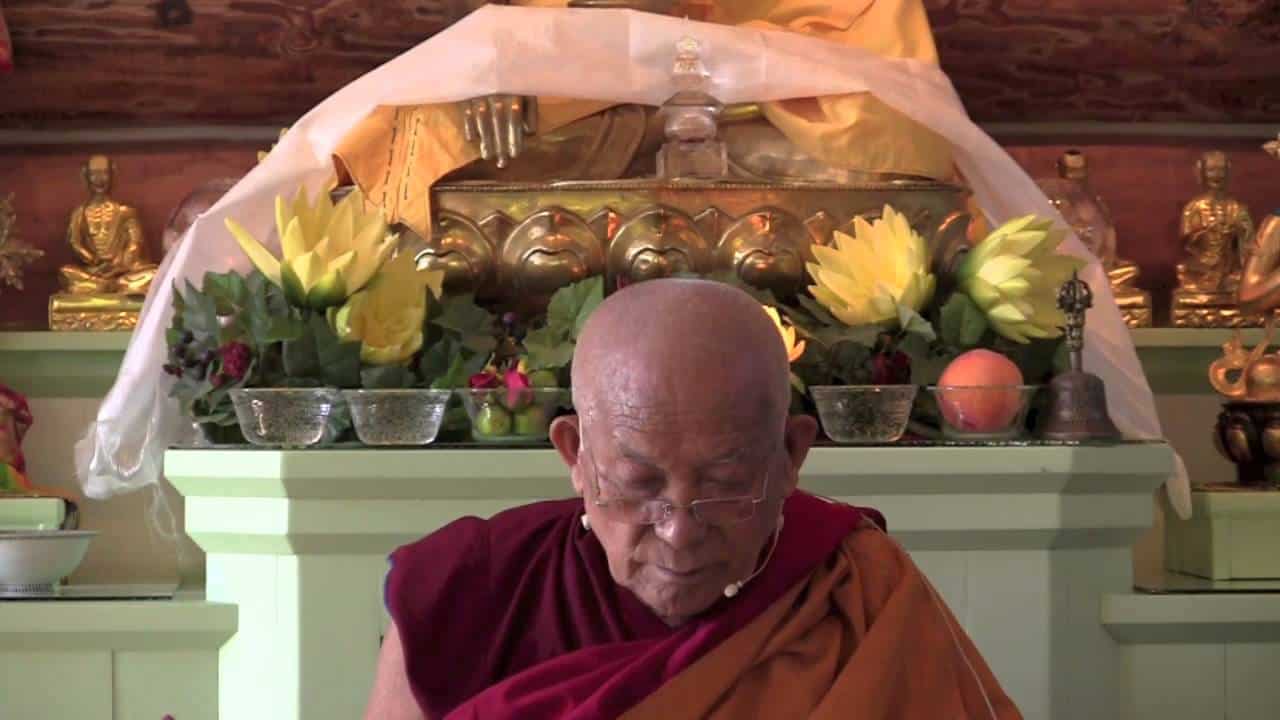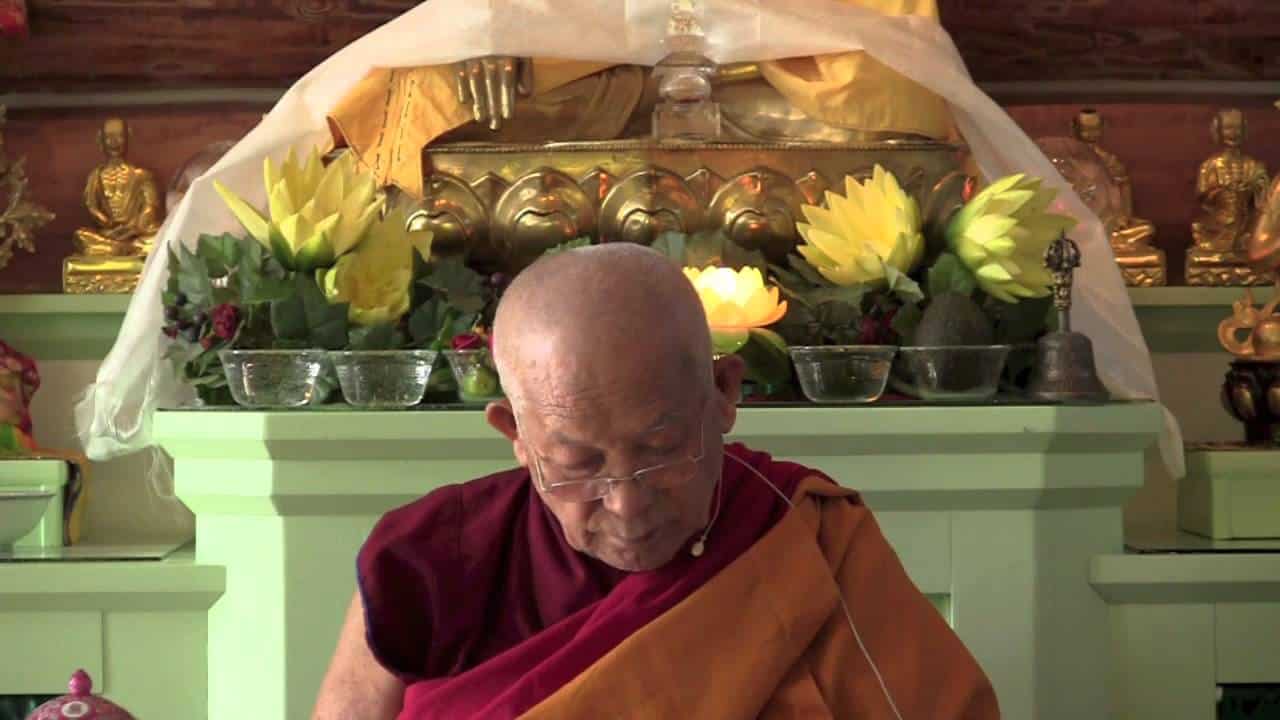Chapter 6: Verses 127–135
Part of a series of teachings on Aryadeva's 400 Stanzas on the Middle Way given on an annual basis by Geshe Yeshe Thabkhe from 2013-2017.
- 12 rules of training to prevent attachment
- Functions of the three poisons
- Why eliminating the three poisons is necessary
- Individual antidotes to anger and attachment
- Methods of training students who have anger and attachment
- Applying antidotes depending on the order of afflictions arising
- Importance of recognizing the disadvantage of attachment
- Two causes of clinging attachment
- How to abandon anger
- Antidotes to ignorance, the root of disturbing emotions
Questions and answers
- Can harming a bodhisattva have a positive karmic effect?
- Great Exposition School’s assertion of the two truths
- Great Exposition School’s assertion that the form aggregate of a buddha is not a buddha
Geshe Yeshe Thabkhe
Geshe Yeshe Thabkhe was born in 1930 in Lhokha, Central Tibet and became a monk at the age of 13. After completing his studies at Drepung Loseling Monastery in 1969, he was awarded Geshe Lharampa, the highest degree in the Geluk School of Tibetan Buddhism. He is an emeritus professor at the Central Institute of Higher Tibetan Studies and an eminent scholar of both Madhyamaka and Indian Buddhist studies. His works include Hindi translations of The Essence of Good Explanation of Definitive and Interpretable Meanings by Lama Tsongkhapa and Kamalasila's commentary on the Rice Seedling Sutra. His own commentary, The Rice Seedling Sutra: Buddha’s Teachings on Dependent Arising, was translated into English by Joshua and Diana Cutler and published by Wisdom Publications. Geshela has facilitated many research works, such as a complete translation of Tsongkhapa’s The Great Treatise on the Stages of the Path to Enlightenment, a major project undertaken by the Tibetan Buddhist Learning Center in New Jersey where he teaches regularly.


